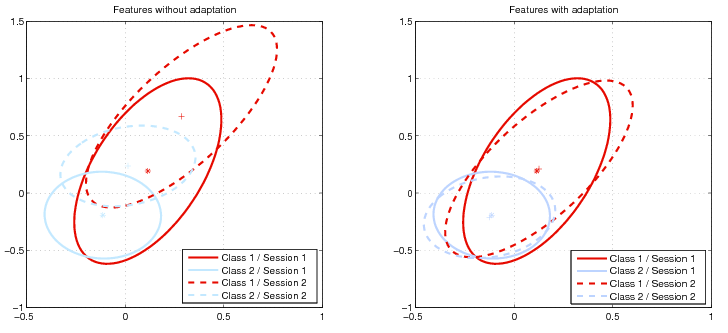
The use of spatial covariance matrix as a feature is investigated for motor imagery EEG-based classification in brain–computer interface applications. A new kernel is derived by establishing a connection with the Riemannian geometry of symmetric positive definite matrices. Different kernels are tested, in combination with support vector machines, on a past BCI competition dataset. We demonstrate that this new approach outperforms significantly state of the art results, effectively replacing the traditional spatial filtering approach.